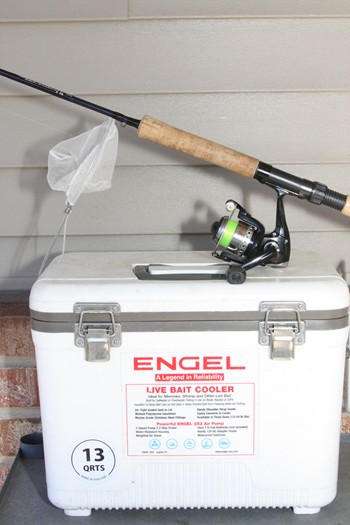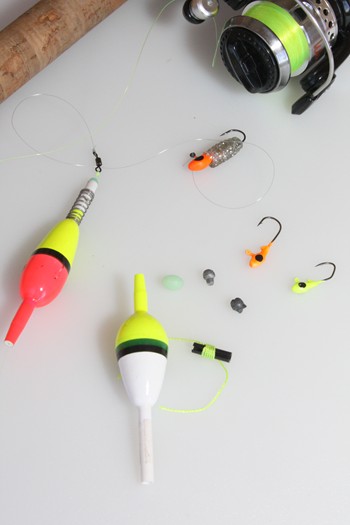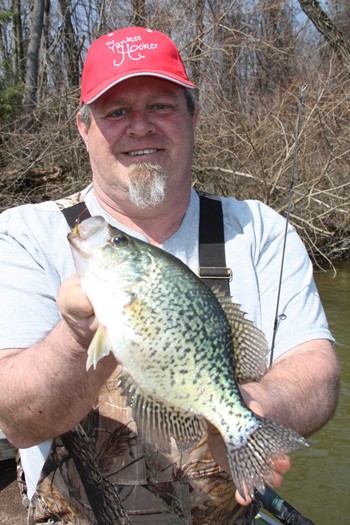 By Darl Black
By Darl Black
Mother Nature pulled a fast one on us this year: NW Pennsylvania ice-out in February! More typically our ice goes out sometime in mid-March, sometimes not until first of April. However, the climate is a changing. Anymore it’s too difficult to predict when lakes will melt.
When the backwaters and “mud bays” shed their ice cover and the sun brings the heat to rapidly warm protected dark bottom shallows, anxious early season anglers can expect a short but exciting shallow water bite for crappies on many area lakes.
Exactly when that will happen during an unusually early ice-out but with continued cold temps and overcast skies, I am not even going to make a guess. Best to check for the bite every day!
Whether you fish from the shore, wade or fish from a boat, ice-out equipment is basic and the presentation simple. While some fishermen will use “whatever they have available” to get in on the action, years of ice-out crappie fishing has steered me to what I consider the best bait, rig, line and rod.

Bait wise, smaller size fathead minnows are my choice. Fatheads are lively even when fished in place. They stay on a hook when hooked through the lips or in the back behind the dorsal. If I am able to obtain them, I will purchase Rosey Reds, which are orange-colored fatheads. I think an orange minnow stands out in the dingy dark water environment very early spring.
Getting the right size in the early spring can be tricky. The “Smalls” are often too small, and the “Mediums” are often too large – so buy a dozen of both sizes.
Keeping bait lively is important. If fishing from shore or wading, you can use a flow-through minnow bucket. But in a boat, you need an aerated bait container. When I started guiding a few years ago I was turned onto the Engel Bait Cooler. The 13 quart Engel is the perfect profile for smaller boats with sufficient volume for 4 dozen minnows, two metal latches on the lid and a battery operated motor that runs for days on two D size batteries. Compared to yellow and white Plano units I used for years, the Engel is bigger, stronger and aerates for a longer period of time on one set of batteries.
My presentation is simple: a Thill slip cork with minnow. But the rigging is precise. I use a heavier main line (8 pound Gamma) with a lighter pound-test leader (6 pound Gamma) about 10 inches long. Onto the main line I slide the stop-knot, bead, cork, and a second bead then tie a #10 roller swivel on the end. To the swivel I tie the short lighter pound test leader.

The cork can be set as shallow as 10 inches or to whatever greater depth may be required. Split shot may be needed to properly balance the cork. Should the hook become snagged and cannot be freed, the leader will break but I don’t lose the Thill cork.
Rather than a bare hook for the minnow, I use a lightweight jig because you get a better hookset. The 1/24-ounce Mo-Glow Head from Bobby Garland had been my choice for years. But this season, I will be switching to Garland’s new 1/32-ounce Overbite Sickle Hook head. Small size #6 sickle hook is better for holding minnows and keeping fish buttoned.
Finally the rod. To be honest, I stumbled into the ideal rod by accident when testing different rods from B’n’M Poles. Turns out their 8-foot Buck’s Ultimate is what I consider the perfect slip-cork rod for spring fishing; it is long, powerful and just the right taper to propel a bulky slip-cork and bait. Short enough to cast from a boat, yet long enough to dabble or pitch around cover. Just the right action to make a low trajectory power cast into the heart of deadfall.
This same rod and rigging meets all slip cork needs regardless of season.
Get Ready and GO FISH!


